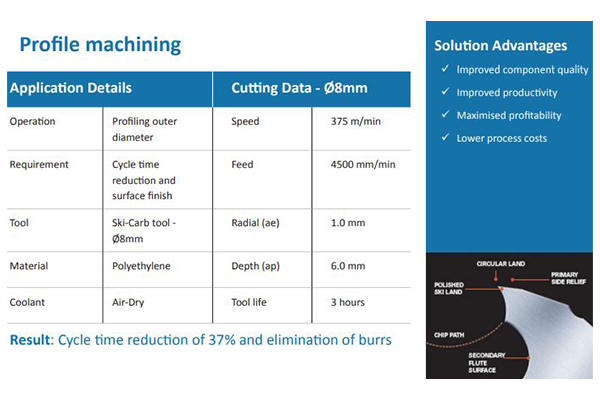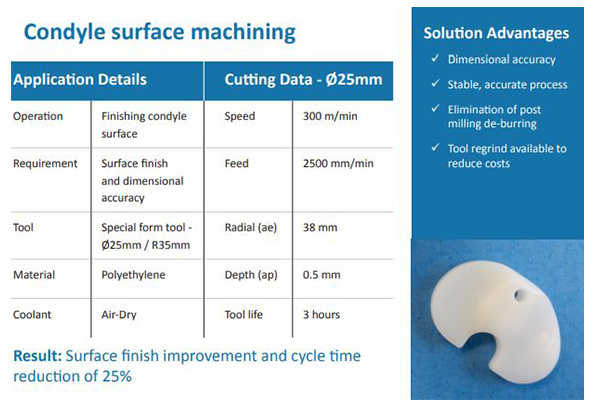
Bearing Insert Components & Solutions
Components
The bearing insert is made from polyethylene and is fitted between the femoral and tibial components to avoid metal-on-metal contact.
The component’s complex design, tight tolerances and stringy material properties can create machining challenges.
Solutions
SGS have developed specific ultra-sharp tooling geometries, such as those seen on our high-performance Ski-Carb range, that overcome these issues.
Ski-Carb geometries are often applied to our special tooling solutions such as t-slot and form cutters that enable the complex shapes of bearing inserts to be more easily manufactured.
Milling of Polyethylene – Ski-Carb
General machining of polyethylene medical components can be difficult due to the stringy nature of the material.
SGS’s Ski-Carb solution has a high helix angle of 45°, whilst the ski-land with primary and secondary flute wall construction minimises chip interference by directing chips away from the secondary flute. This combination of geometry helps to eliminate burrs and produce satisfactory surface finishes.
You can read more about our Ski-Carb range here: https://kyocera-sgstool.co.uk/product/ski-carb-series-44-and-45/

Milling Condyle surface – Form tools
Form tools can also be produced with the Ski-Carb geometry to the exacting tolerances demanded by this type of component. The solution shown is for machining the condyle surface of the bearing insert that the upper convex-shaped femoral component is located in. Quality of the cutting edge is key.

Check out our video featuring our tooling for machining bearing inserts.

